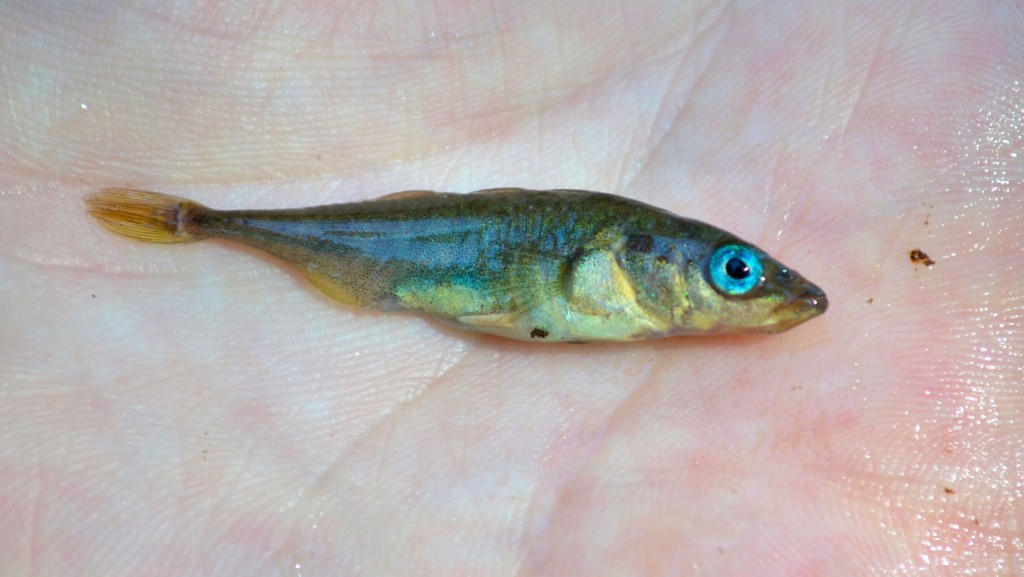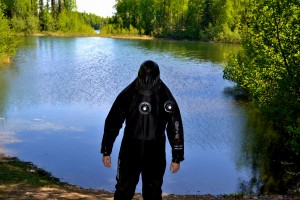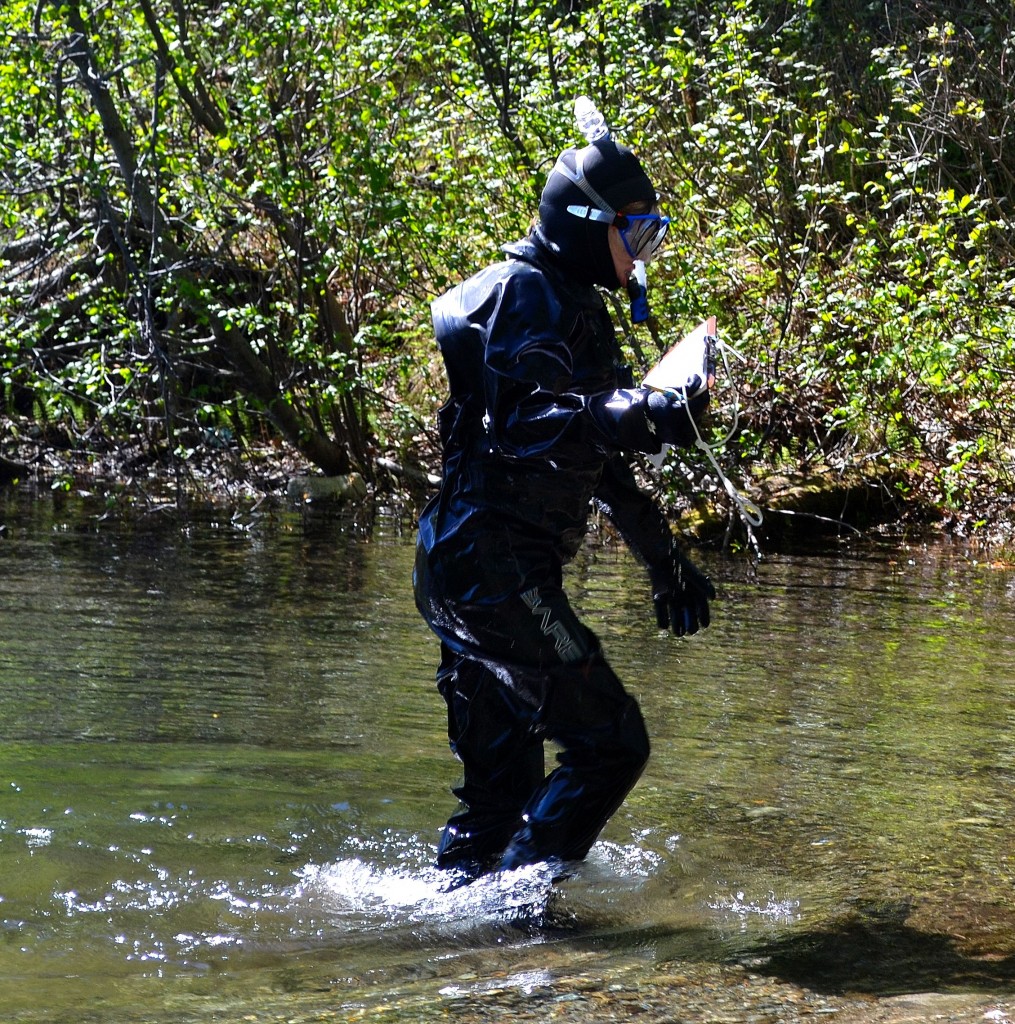A Stickleback Spectacle

“When you finally see what goes on underwater, you realize that you’ve been missing the whole point of the ocean. Staying on the surface all the time is like going to the circus and staring at the outside of the tent.”
― Dave Barry, Blub Story; A Very Deep Experience
He hovers above his nest, gently fanning his fins. Resting below are his precious eggs. He has likely performed a serious of courtship behaviors to lure a female inside the nest he built, where she dropped her eggs and he fertilized them immediately after. These eggs are his everything; they are the purpose to his two years of growth to about 3 inches long, the reason why he has a bright red underbelly to attract females, and the reason he will expend all his resources to raise the offspring until they can survive on their own and he can die.
A male from a neighboring nest darts a little too close for comfort, and he chases him away with an aggressive, stinging dart. He looks up at me from time to time, and I hold my breath. Initially, I am taken by the blue of his eyes and by my proximity to this fish I have heard so much about. To see him illuminated by a shaft of light in the reeds offshore, and not by the florescent lights of the lab, is more striking than I had anticipated. A few minutes later, I hold my breath in some misguided hope that it will keep my presence from alarming him. He looks away each time, more concerned about the threat the other stickleback pose to him than the dangers of this floating log.

My male swims suddenly up to join a group of stickleback looking for food near the surface. After a few seconds, he swims hastily to the lake floor, gesturing wildly as if he has found something delicious to eat there. A few of the stickleback from the foraging group have joined him on the bottom. My male swims proudly away as they peck at the bottom at the food that was never there; this tricky male diverted the group to a spot away from his nest so they would not eat his hard-earned eggs, as some stickleback have been known to do.

This is the scene I saw in my dry suit and snorkel in Lynne Lake. In only a period of 30 minutes, I had seen nearly every behavior I had so systematically dissected in the lab over the past semester. While waiting and watching behavior in a lake is rigorous work (not to mention the work that goes into just trying to get into your dry suit and accessories), it is rewarding to see these intricate behaviors that make the stickleback multifaceted and interesting organisms to study.
These fish are dramatic in their own right, more so than I could probably describe in a series of posts. It’s odd to watch a lake from above and have little to no idea of the complexities that occur below the surface, then to snorkel around in the same lake and see a whole new society that functions mostly apart from (and often much better without) human interaction. What Dave Berry says of the ocean above is applicable to these lakes as well; they have become so much more beautiful to me now that I have seen the vibrant life that exists below the surface.

Emma’s field biology word of the day: fecund (adj.)
Definition: fruitful in offspring or vegetation; prolific
Use in the field: “Often larger stickleback are more fecund than smaller females; they simply have more space and resources to devote to their offspring.”
Source: Merriam-Webster 2013